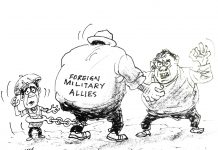
It has been years since the city government of Tacloban rerouted traffic flow of the poor man’s public transportation, that is, the motor cab for hire (MCH). It was rammed upon the riding public in the guise of experiment where traffic signs were installed on street corners purportedly on a temporary basis with the aim of quelling public resistance.
That rerouting was designed to ease traffic by making some major streets one-way for MCH. It also paved the way for the entry of four-wheeled yellow spider mini-cabs that competed with the MCH not only in income but the use of city streets. The public transportation inside the city got heavier than the traffic problem that the one-way traffic system aimed to solve.
The direct impact of the traffic rerouting was on the income of MHC operators and drivers who had to go around one-way routes with often one passengers as taking two or three passengers would often be on different destinations and out of way. The driver would be without choice but take one passenger of the shortest route to save on time and fuel.
Under the old two-way route system, an MCH could take at least two or three passengers and pass all destinations on a single round. That was so because the traffic system allows MCH to pass through all city streets or take a u-turn for the next passenger’s destination.
On the part of the passengers, they have to wait for the MCH whose driver would accommodate them for a ride. More than the delay, passengers have to pay more than the regular fare just to get a ride especially if the distance is farther than the regular and the driver would be at a loss for just one passenger.
comments to alellema@yahoo.com



